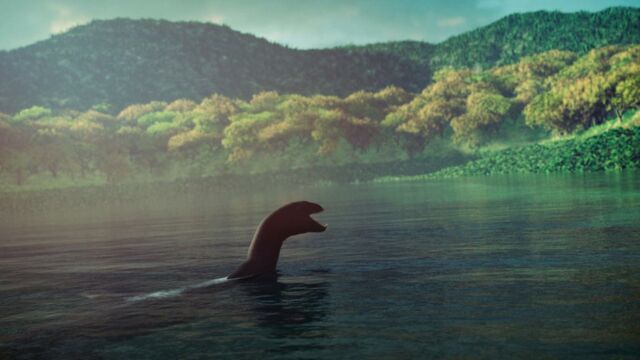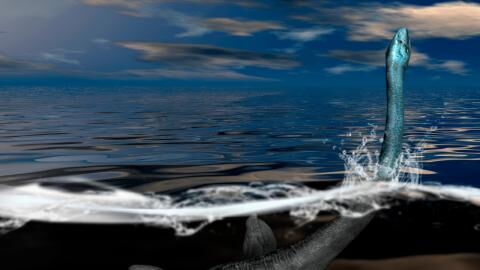Is or was Loch Ness home to a gigantic marine reptile? Since the first mention of the ‘Loch Ness Monster’, aka Nessie, at the very end of the 19th century, tourists, budding photographers and cryptozoologists (the study of animals whose existence has not been proven) have been trying to find a concrete trace of Nessie's passage. A new study suggests that such an animal could have flourished in these waters.
Discover our latest podcast
Nessie: a tourist attraction
Nessie is described as a large animal with a long neck and a small head, a description that suggests a reptile, or dinosaur. Since 1930, a few refutable proofs of its existence have been discovered: blurred videos and dark or distorted photographs. In fact, it is yet to be confirmed whether Nessie does or does not exist.
🔎 Existence of Loch Ness Monster is ‘plausible’ after fossil discovery
— The Telegraph (@Telegraph) July 26, 2022
River system dig in modern-day Morocco offers ‘controversial’ new perspective on how marine reptiles and aquatic dinosaurs co-existed
🧵👇https://t.co/nbkNfUyjWY
Meanwhile, Loch Ness has become a tourist attraction. The monster has become part of folklore and tourists are invited to take part in mini-cruises on the loch, where Nessie is hunted down with sonar (each time in vain). Science, on the other hand, has never been team Nessie, arguing that a creature of this type cannot live in such a habitat. Well, that was before.
A not-so-fantastic creature?
Nessie could be, according to its description, a plesiosaur: a large carnivorous aquatic reptile. The problem is that it was thought that these now extinct creatures could only live in salt water. However, a recent study by the University of Bath suggests that ‘some species of plesiosaurs, traditionally thought to be marine creatures, may have lived in freshwater.’
This claim is based on the discovery of plesiosaur fossils in an African river. According to the research team:
These fossils suggest that plesiosaurs were adapted to tolerate freshwater, perhaps even to spend their lives in it, like modern river dolphins.
Let's be clear, this does not confirm the existence of Nessie at all, but it does make it suddenly much more plausible! So is Nessie a real animal, in the flesh and scales? The mystery is yet to be solved.
This article was translated from Gentside FR.
Read more:
⋙ Never-seen-before skeleton of a giant dinosaur discovered in Argentina
⋙ Skeletal remains of the oldest 'European' in history discovered by researchers
⋙ Researchers discover prehistoric fossils of a rare bear-dog hybrid















